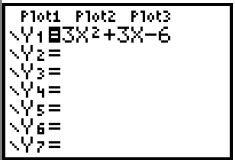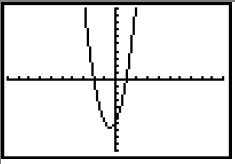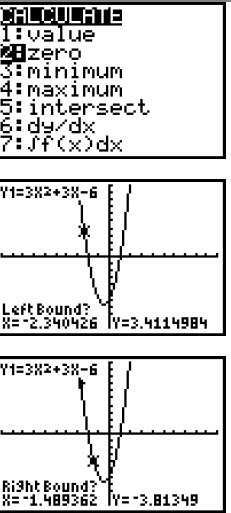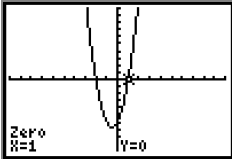Solving Quadratic Inequalities
Example: Solve 3x2 + 3x - 6 < 0
 |
Step 1: Go to  and under Y1 enter and under Y1 enter3x2 + 3x - 6. Press  . .You are graphing a quadratic function , so the graph should be a parabola . |
 |
Step 2: You want to determine where the quadratic function is less than 0. So you need to look at the graph and determine what part of the graph lies below the x-axis or the line y = 0. |
 |
Step 3: The part of the graph that is below the x-axis is the part that lies between the x-intercepts. To find these x- intercepts or zeroes , go to  , the CALCULATE , the CALCULATE menu, and select 2: zero . Press  . .To find the intercept on the left , use the arrow keys to move the cursor to the left of the point, press  . .Then move the cursor to the right of the point, press  , and then , and thenpress  again. again.The x-intercept is x= -2. |
  |
To find the intercept on the right, go to  , the CALCULATE , the CALCULATE menu, and select 2: zero . Press  . .Then repeat the process used above. The other intercept is x = 1. |
 |
Step 4: Remember - since you are solving an inequality , the solution will be an interval or the union of two intervals. The solution to this inequality is the interval (-2, 1) or -2 < x < 1. |
| Step 5: If you want to determine where a quadratic is greater than 0, you need to look at the graph and determine what part of the graph lies above the x-axis. |
| Prev | Next |